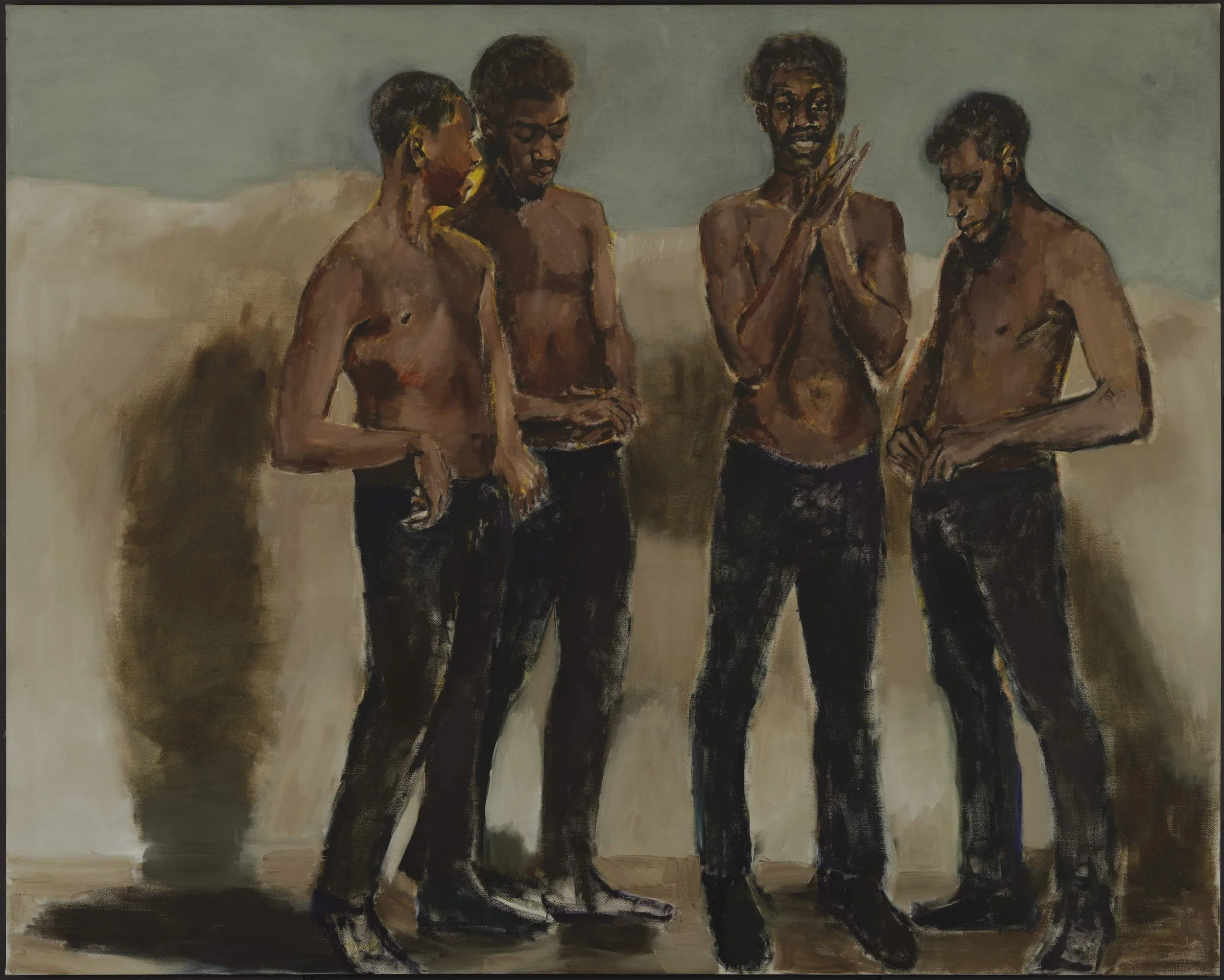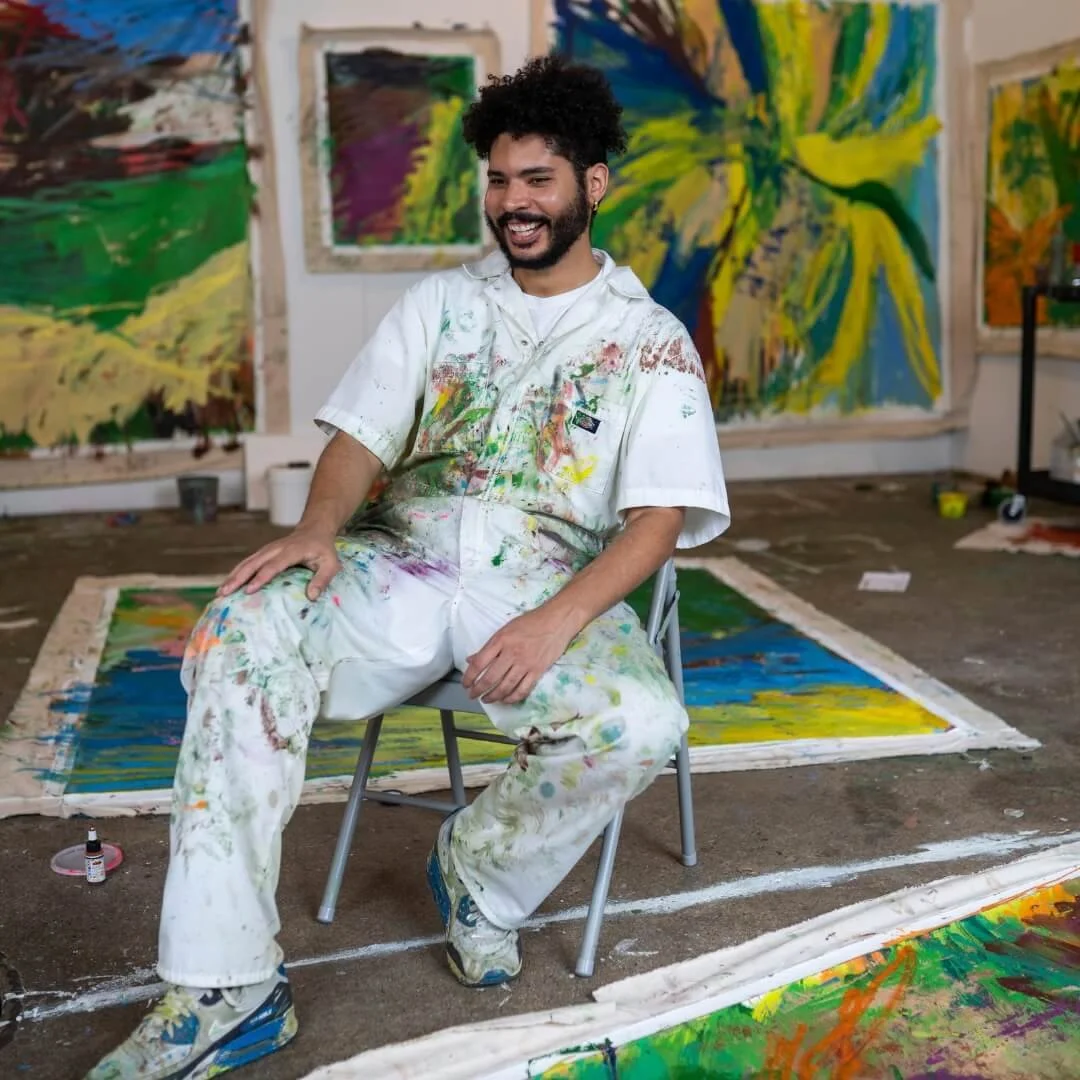Part II: The Contemporary Inheritance of Black Impressionism
Diplomacy 1 by Lynette Yiadom-Boakye, (2020).
In Part I: The Origins of Black Impressionism we traced how artists like Henry Ossawa Tanner and Allan Randall Freelon adapted Impressionism into a language of autonomy. Here, in Part II, we bring this forward into the present.
Today, the foundational principles of atmosphere, color, and perceptual immediacy remain, but contemporary Black Impressionists are now using them to probe interiority, memory, and imagined worlds. Where the early masters asserted dignity through technique, today’s painters redirect the Impressionist impulse toward psychological depth and new ways of seeing.
A Shift in the Painter’s Eye
Walk into a contemporary Black Impressionist exhibition and you’ll notice that the hallmark loose brushwork is now used to blur certainty. Light itself has become conceptual, expressive, sometimes even invented. Color drifts further from naturalism and deeper into emotional temperature. Two artists—Lynette Yiadom-Boakye and Paul Verdell—embody these shifts in distinctly different ways, each expanding the historical lineage into new territory.
Lynette Yiadom-Boakye: Speed, Intuition, and the Imagined Human
Lynette Yiadom Boakaye.
Yiadom-Boakye’s figures occupy ambiguous, invented spaces—not the riversides or salons of Impressionist France, but settings stripped of explicit geography. Her practice is defined by speed: she often completes a painting in a single day, a deliberate constraint that forces her to work wet-on-wet and prioritize essential forms over detail. The velocity of her process preserves a painterly immediacy, the kind that resonated with the Impressionists, but her purpose diverges sharply from theirs.
Amaranthine by Lynette Yiadom-Boakye, (2018).
Instead of capturing “the moment observed,” she captures “the moment imagined.” Her brushwork is economical, sweeping, and often leaves visible traces of decision-making. While recalling Manet’s fluidity, it carries a different psychological charge. Shadows are softened with scumbling, edges suggested rather than resolved. The result is a surface that feels as if the figure might shift slightly when you look away.
In Yiadom-Boakye’s work, light reveals an inner physical environment granting Black subjects implied histories, private thoughts, and emotional nuance without narrative instruction.
Paul Verdell: Density, Materiality, and Emotional Light
Venus by Paul Verdell, (2020).
Paul Verdell.
Paul Verdell, on the other hand, approaches the canvas from almost the opposite direction. Where Yiadom-Boakye moves quickly, Verdell builds slowly. Where she simplifies edges, he shapes them through physical accumulation of material. His technique of layering oil and pastel into thick, velvety impasto creates surfaces that read as sculpted rather than brushed.
Instead of dissolving forms into a haze (a classical Impressionist hallmark), Verdell uses heavy color to assemble the figure from atmosphere outward. Strokes remain visible, directional, and assertive. Pastel lines sit atop wet oil, adding flashes of texture that interrupt the softness below. His palette, often electric in saturation, bends light toward emotional states rather than natural ones.
Soft Pink by Paul Verdell, (2020).
Verdell’s portraits radiate from within because the layering of pigment generates its own internal glow. Every stroke adds temperature, biography, memory, or mood. Where the historical Impressionists captured “what the eye sees,” Verdell captures “what the moment feels like.”
The Expanding Definition of Black Impressionism
Contemporary Black Impressionism isn’t a strict genre; it’s a throughline, an evolving set of painterly instincts shaped by history but not bound to it. Its modern characteristics include brushwork as the disclosure of process rather than optical observation. Color is pushed into emotional territory and light is used conceptually rather than descriptively. Figures become centered in imagined, or psychological space, inheriting the openness of Impressionism while redirecting its tools in order to articulate complexities the original Impressionist movement never addressed.
Conclusion: A Lineage That Keeps Redefining Itself
From Tanner’s spiritual light to Freelon’s coastal harmonies, and now to Yiadom-Boakye’s interior worlds and Verdell’s dense chromatic atmospheres, Black Impressionism has continually reshaped itself—each generation adding new dimensions to the language of light and perception.
The movement persists by transforming Impressionist aesthetics, exploring identity, mood, imagination, and the ways Black life can be seen in the mind, the memory, and in feeling.-






